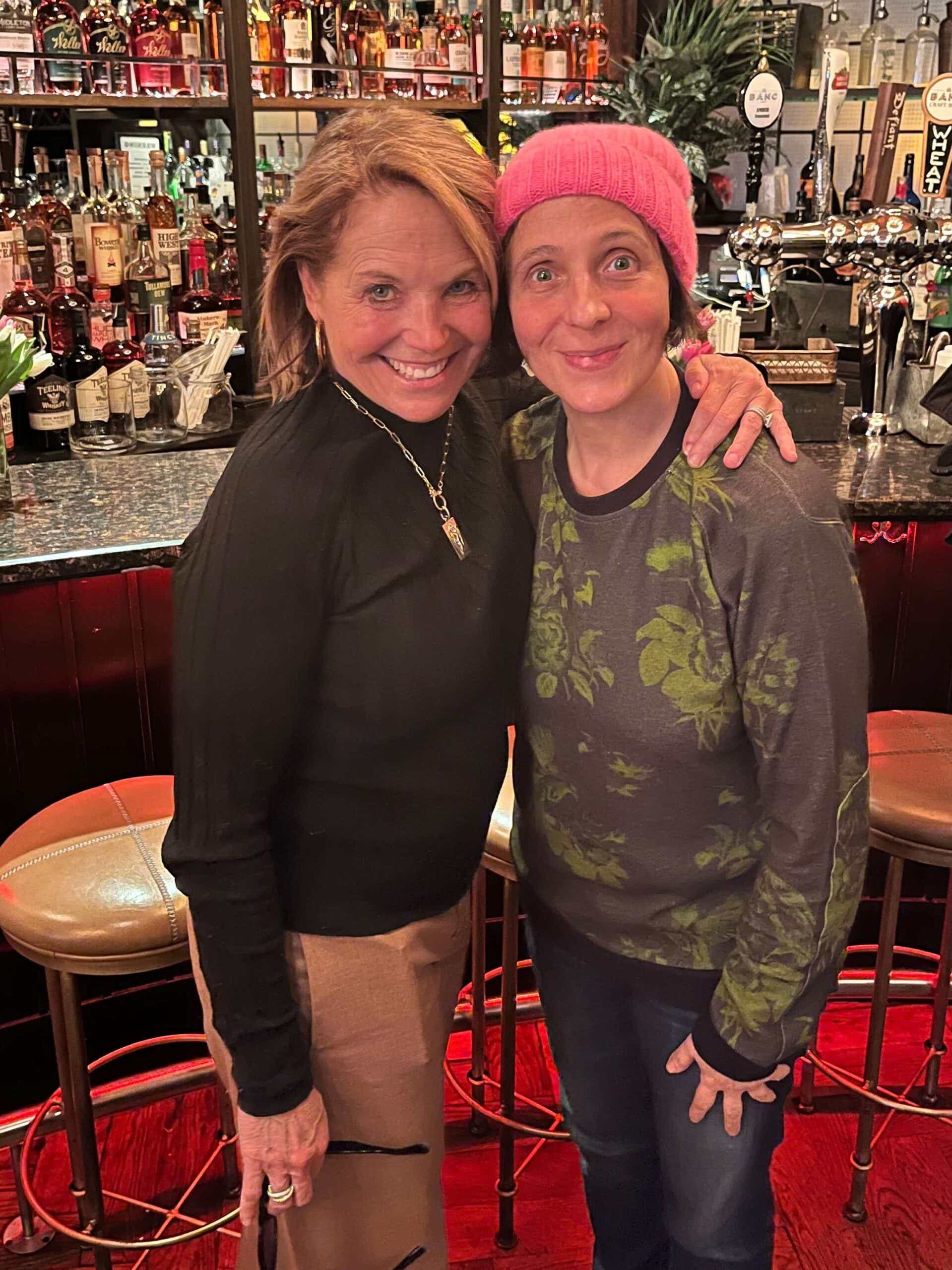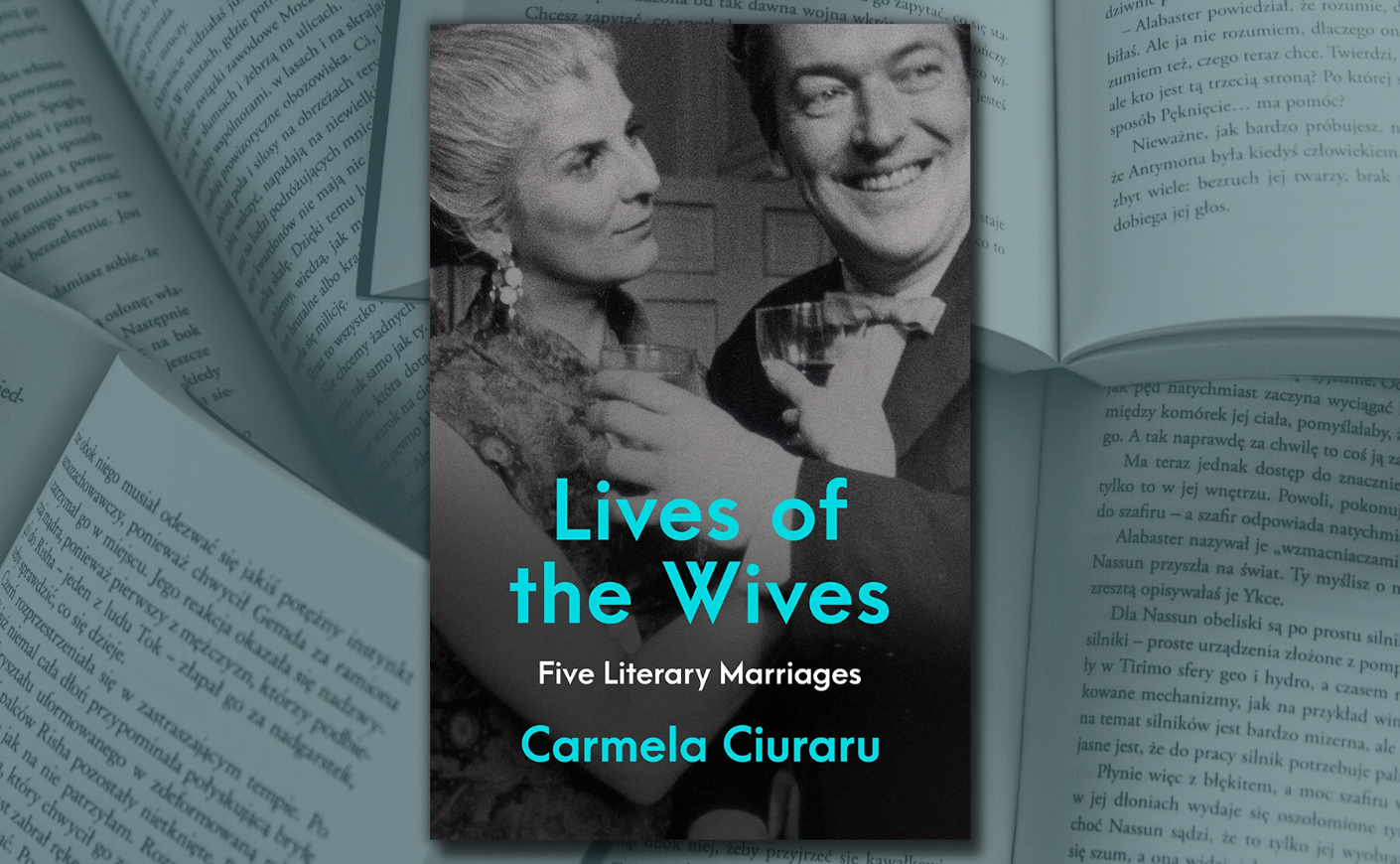It’s said that “behind every great man is a great woman,” and that’s certainly true when it comes to artistic legends. While Hemingway, Fitzgerald, Tolstoy, and Dickens are household names, few of us know much about the women in their lives who made their careers possible, via the unseen labor so many wives and mothers provide. And we know even less about those women’s ambitions and goals, some of which had to be stifled in order to offer up all that support.
Now, author Carmela Ciuraru explores that phenomenon in The Lives of the Wives, a new book that details five fascinating, albeit tumultuous, literary relationships. I’ve actually known Carmela since she was 16 years old and I was a local news reporter covering a strike at her high school in Montgomery County, Maryland. (Which was…a while ago.) We’ve been friends ever since! But even if we weren’t, I’d be devouring this fantastic new book. I checked in with Carmela to understand what drew her to this subject, and what universal truths we can learn about so many other marriages, by analyzing these special partnerships.
What attracted you to the subject of these literary marriages?
I’ve always been interested in writers’ lives and have read many biographies of my favorite novelists and poets, as well as their memoirs, diaries, and letters. While working on my previous book, Nom de Plume: A (Secret) History of Pseudonyms, I was struck by how many writers’ wives were complicit in protecting the literary identities of their spouses. Some took extreme measures to do so, along with enabling the creative process in general: doing all the cooking, cleaning, laundry, and more, and of course taking care of the children. These women sacrificed their own needs and ambitions, and often suffered in silence. I was also struck by a quote I came across in which a famous novelist, a single mother, said in an interview that every writer needed a wife — including her. It was funny, but also not funny. She was desperate for more time to write.
I knew that throughout history, many writers’ relationships were stormy, passionate, and mutually destructive, and involved alcoholism, infidelity, misogyny, and other dysfunctional elements. I started thinking about the seductiveness of power and fame, and how charismatic, complex, and brilliant some of the writer-husbands were. And I wondered what the wives had given up to be with them, and why. Countless biographies have focused on the men, the so-called great literary geniuses. What about their devoted wives? I wanted to tell those stories. I wanted to know why they stayed in such stifling marriages for so long. There was no shortage of drama in these train-wreck unions. I really enjoyed doing the research, but the material was painful to read.
How did you narrow it down to the five couples?
That was an agonizing process that I had to work through over time. Initially, I had a long “wish list” of couples I wanted to write about, and I knew I had an abundance of great material. It was hard to let go and pare things down. I did write a few extra chapters that didn’t make it into the book, so maybe I’ll find a way to use that bonus material at some point.
I decided to skip the more well-known marriages of writers such as Ernest Hemingway, F. Scott Fitzgerald, Tolstoy, and Dickens, all of whom were notoriously awful husbands. In the end, my choices were dictated partly by what I could uncover in my research. In some cases, there was plenty of fascinating material about the husbands, but (surprise!) very little information about the wives — at least, not enough for me to craft a meaningful story about that particular couple. I wanted each story to be engaging and rich. There was a lot to figure out!
Was there a common theme in the life of each wife?
Heartbreak, trauma, disappointment, and rage. Sorry to be such a downer! But it’s true.
Each of these women had extremely difficult childhoods, along with histories of troubled romantic relationships and spouses that were psychologically abusive to a greater or lesser extent. Another common theme? Courage. I found these women incredibly brave, not only for what they endured, but for how they reinvented themselves after their marriages collapsed.
What did you learn from researching and chronicling these relationships?
I don’t know if this really answers your question, but I learned how timely the book seems. Over the years, all I had to do was mention the theme of my book to someone and I often got an earful about her marriage. (One woman I met at a party spent more than an hour telling me about her husband’s supposed narcissism, his rampant cheating, and the private detective she planned to hire.) A number of women have vented to me about the imbalance of power in their marriages — whether they were stay-at-home moms raising three kids, or executives at Fortune 500 companies, or artists or writers themselves. Even though I had researched the lives of five women born before 1930, the issues they grappled with are clearly still playing out today.
That said, I’m no misandrist and I have no desire to demonize men. There are some wonderfully nurturing and supportive husbands and fathers out there, and some of them are even acclaimed writers.
Yet I must admit that I’ve been surprised by the parallels I’ve seen between the early- and mid-twentieth century marriages chronicled in my book, and the women I’ve met who have shared anecdotes about having their ambitions stifled and suppressed by their spouses. For some, the key to freedom was divorce; others have stayed with their husbands and quietly pursued their interests in private. One woman I know is secretly writing a novel, and I’m not sure when or if she plans to tell her husband. That she feels the need to hide this major creative endeavor speaks volumes about the marriage.
Did you have a favorite person to write about?
I don’t, but I have a soft spot for the wonderful Patricia Neal, whom I once had the honor of interviewing, and who survived epic struggles and losses. She showed such grace and humor through it all. There’s a chilling scene in my chapter about her marriage to Roald Dahl: one night, while he’s sleeping, she whispers in his ear: “I wish you were dead. I wish something would kill you.” He was terribly cruel. Life with him was no rom-com.
Do you think these relationships would have been different if they’d happened today?
Maybe. Then again, we’re talking about a bunch of very damaged people, so the era in which they live might not change a thing. These women were in extremely codependent relationships, and it might not have been any easier to extricate themselves today.
I often think of this passage from a book I love, The Cost of Living, a memoir by the British writer Deborah Levy, written in 2018: “When our father does the things he needs to do in the world, we understand it is his due. If our mother does the things she needs to do in the world, we feel she has abandoned us. It is a miracle she survives our mixed messages, written in society’s most poisoned ink.”
I think that quote captures the fundamental struggle of the wives in my book. Pursuing their ambitions caused them to feel guilt and shame, even as their husbands felt free to go out and conquer the (literary) world, with nothing holding them back. I hope my book will raise some provocative questions, and spark conversations about why so many women still have to deal with unspoken non-compete clauses in their marriages.
Throughout history, how many manuscripts by brilliant, talented women were never completed, or never even started, simply because those women couldn’t overcome the demands, burdens, and impediments of marriage and motherhood? I guess we’ll never know.










